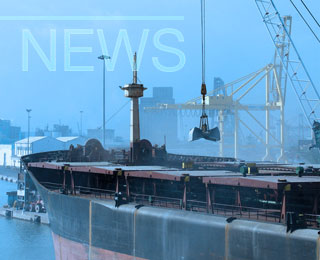Continued volatility in the ocean freight sectors marks the day to day progression of the Baltic Dry Index and consequently affects all shipowners involved in dry bulk trades. And while the more optimistic would suggest a slow upward progression in the BDI in recent weeks, the more cautious would point to the unassailable fact that more new dry bulk tonnage arriving from the world’s shipyards will continue to aggravate the current shipping oversupply and this can only hinder the freight market’s possible rally back at healthier levels.
Apparently all eyes are on iron ore. Steady steel prices have supported rates for both Cape and Panamax sectors with a surge in activity levels noted during the past few days and rates continue to make some useful gains. Iron ore is the biggest single dry-bulk cargo hauled at sea, accounting for an estimated 26 per cent of the total moved this quarter, according to analysts. But looking at the fundamentals and despite a raft of government stimulus packages, steel demand has taken a severe pummelling since the financial crisis, overturning all previous assumptions. While steelmakers talked of a 10% drop in demand in 2009, the World Steel Association (WSA), representing 85% of global steelmaking capacity, finally declared last week that global decline would be close to 15% - the largest figure since the war. Although consensus suggests demand will rise again in 2010, it is clear the industry will have to climb out of a significant trough first – note brokers at Barry Rogliano, Paris.
The US is predicted to suffer the greatest decline, with demand falling almost 37% compared to 2008. The NAFTA area as a region will see demand fall 32%, while Europe is expected to record a 29% reduction. The ‘BRIC’ countries are showing more resistance, though given previous growth forecasts, they arguably have further to fall: China will see demand drop 5%, Brazil 14%, Russia 22%, while India will be one of just three countries (the others being Egypt and Iran) to show growth, albeit of just 1.2%. Overall, consumption is expected to limp to 1bn tons in 2009, marking the first annual decline in steel demand for 12 years.
Looking more specifically at the Panamax sector, Barry Rogliano also reports that after a quite active mid-April, the last week of the month started slowly especially in the Pacific. Quickly, however, an increase of fresh business helped the markets not to fall too rapidly below the 10,000 mark for NOPAC. The coming end of the grain season out of South America did not yet affect the Atlantic and a thin balance between cargoes and vessels enabled to achieve firm levels at the end of the week with TARV around US$14,000 and rising fronthauls trips close to US$20,000.
The week started out strong for Supra/Handy sectors due to a lack of tonnage in specific loading regions, most notably Indonesia. Better positioned vessels in SE Asia were fixing in the regions of US$13-14,000 by the time the week closed. There was also some activity on the short period front with Supramaxes being fixed between US$12-13,000 basis North Asia delivery. Most owners with ships in India showed a preference to send their vessels for an ECSA round, where rates hovered around US$13,000 for vessels on the West Coast and low teens on the East Coast. Straight trips to China were between US$12-14,000, with ships on the West Coast getting just a touch more than those on the East.
The Atlantic basin remained firm in the Continent and US Gulf, but somewhat softened in the South Atlantic due to a lack of grain cargoes from South America. Early in the week a 47,000dwt fixed in excess of US$20,000 delivery Durban for a trip back to PMO/Japan range. Similar ships ended the week fixing around US$16,000 for the same run. Modern Handies also achieved over US$20,000 for scrap cargoes from Continent to the Med – concludes Barry Rogliano. Published under Cement News


